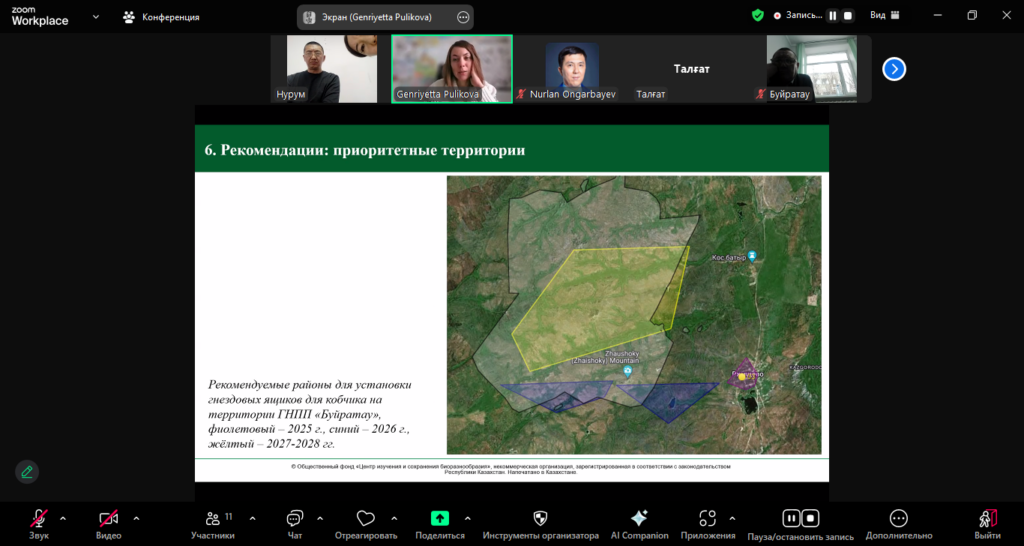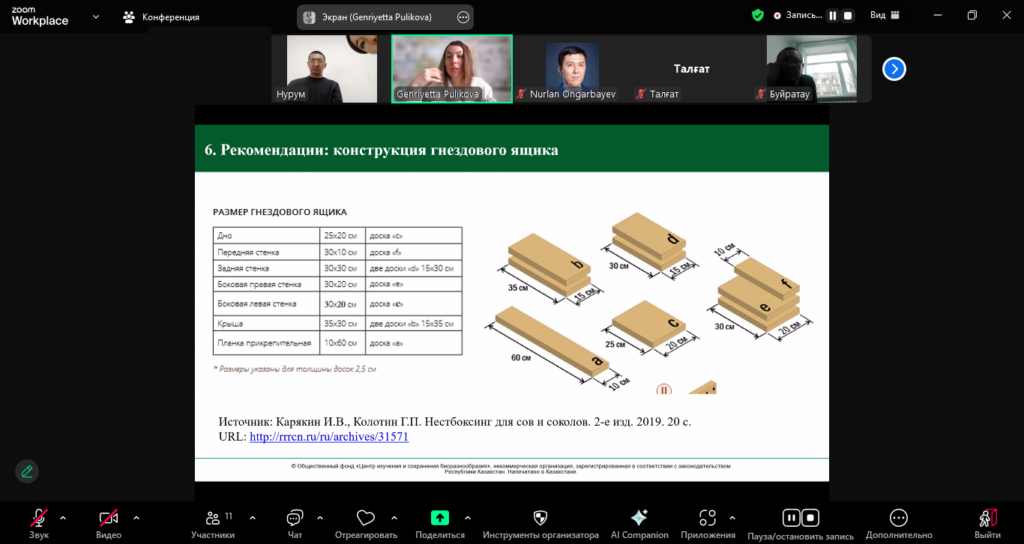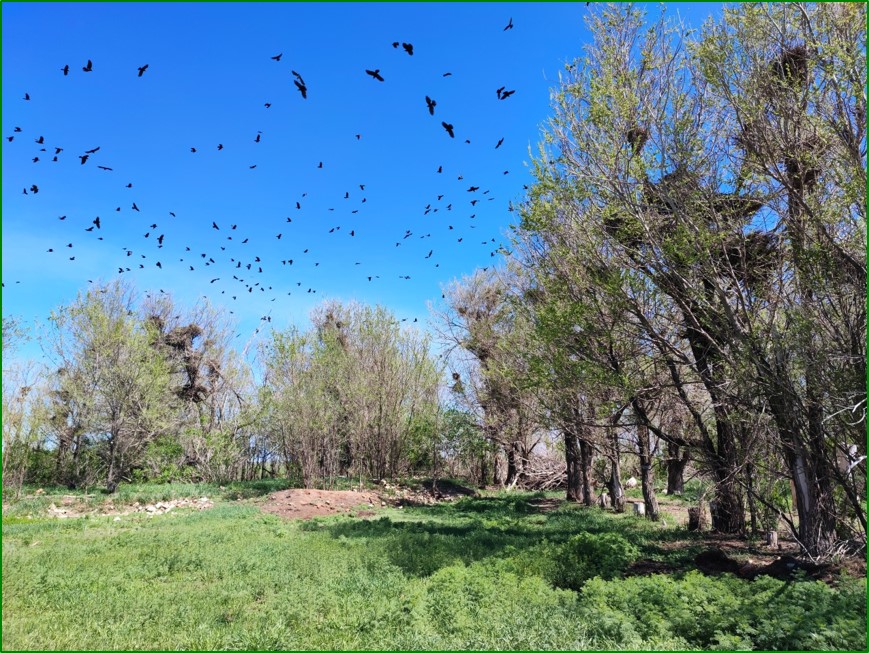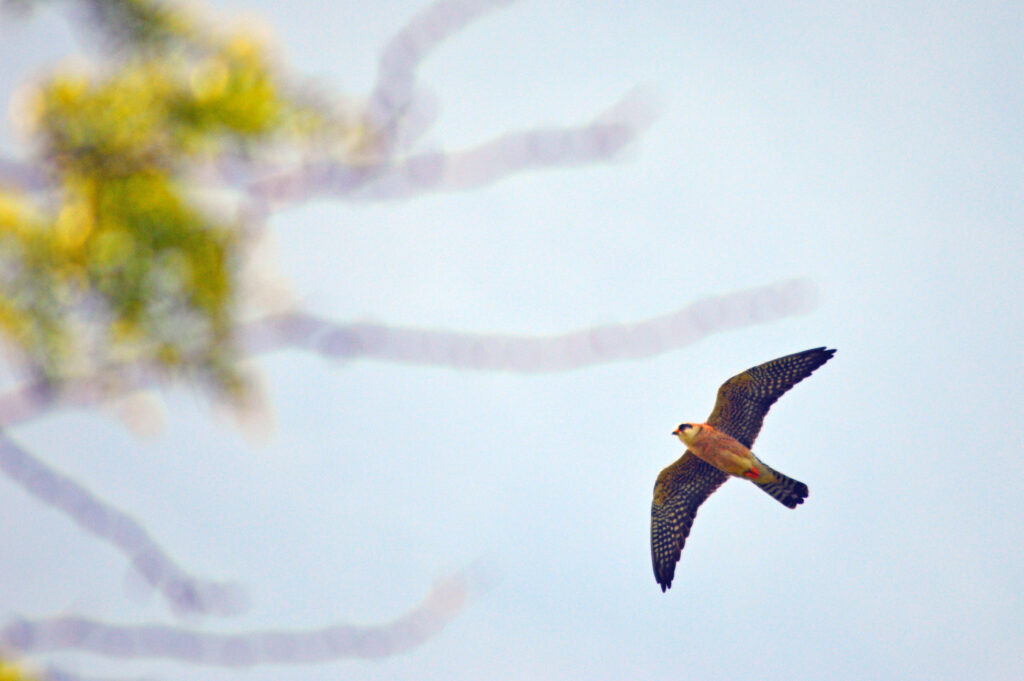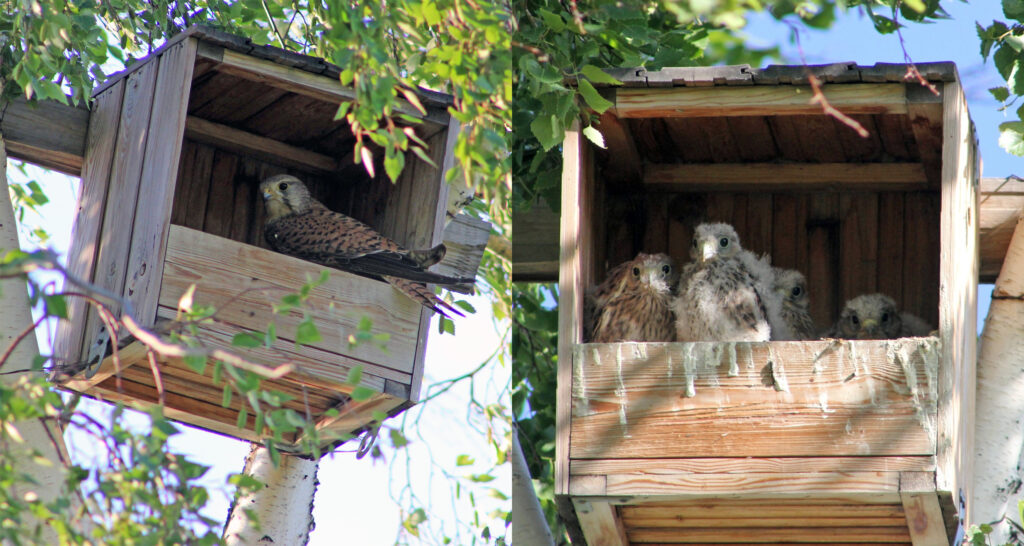BRCC with OSME support conducted a training workshop in Buiratau National Park on nestboxing for small falcons
In 2024, a team from the Biodiversity Research and Conservation Center (BRCC) conducted an expedition to the vicinity of the Buiratau National Park as part of the project “Study of the status of the nesting group of the Red-Footed Falcon (Falco vespertinus) in Ereimentau, Northern Kazakhstan”. The study was supported by a grant from the Ornithological Society of the Middle East (OSME).
BRCC specialists surveyed areas where nesting of the Red-Footed Falcon was previously recorded, as well as areas with potentially favorable conditions for its breeding. As a result of the expedition, a map of priority locations where the species' numbers could be restored by installing artificial nesting sites was compiled.
Buiratau is the twelfth national park in Kazakhstan, created on the lands of the state forest fund of Temirtau and Ereimentau forestry institutions. It is located on the territory of Ereimentau district of Akmola region and Osakarovsky district of Karaganda region. It consists of two branches - “Ereimentau” (60,814 ha) and “Belodymovsky” (28,154 ha). The total area of the national park is 88,968 ha.
The main goal of the national park is the preservation of natural complexes and objects combined with the organization of environmental education of the population in the process of direct acquaintance with typical and unique landscapes, plants and animals.
The fauna of the national park includes 56 species of mammals, 196 species of birds, 22 of which are listed in the Red Book of Kazakhstan.
On 29 January 2025, BRCC organized an online training workshop for the staff of the Buiratau National Park. The topic of the training was the production and hanging of artificial nests (nest boxes) for small falcons. At the moment, the nesting of passerines has been recorded only in the vicinity and protection zone of the national park, but there are also suitable habitats in the park itself, where non-breeding (placement of artificial nest boxes for birds) can contribute to the creation of stable nesting groups.
The Red-Footed Falcon is listed as Vulnerable (VU) on the IUCN Red List. The main threat to the species in the region is the reduction of nesting habitat due to forest fires. As this species does not build nests on its own, its reproduction depends on the presence of colonies of rooks and crows, whose nests it uses, or on the installation of artificial nesting sites.
The workshop was attended by 11 employees of the National Park, including specialists from the Conservation Department, Scientific Department and Game Wardens. Genrietta Pulikova familiarized the trainees with BRCC activities, told about the project of studying the Red-Footed Falcon, presented a map of priority areas for nestboxing and methodological recommendations. These materials will be transferred to the disposal of the Buiratau National Park.
Nurlan Ongarbayev, BRCC Executive Director, shared his experience in attracting birds to artificial nesting sites in Buiratau, and Nurum Sagaliyev, a hunter of the Yereymentau branch, who has considerable experience in this direction, spoke about plans to further develop the nesting fund and monitor the success of its occupancy in 2025.
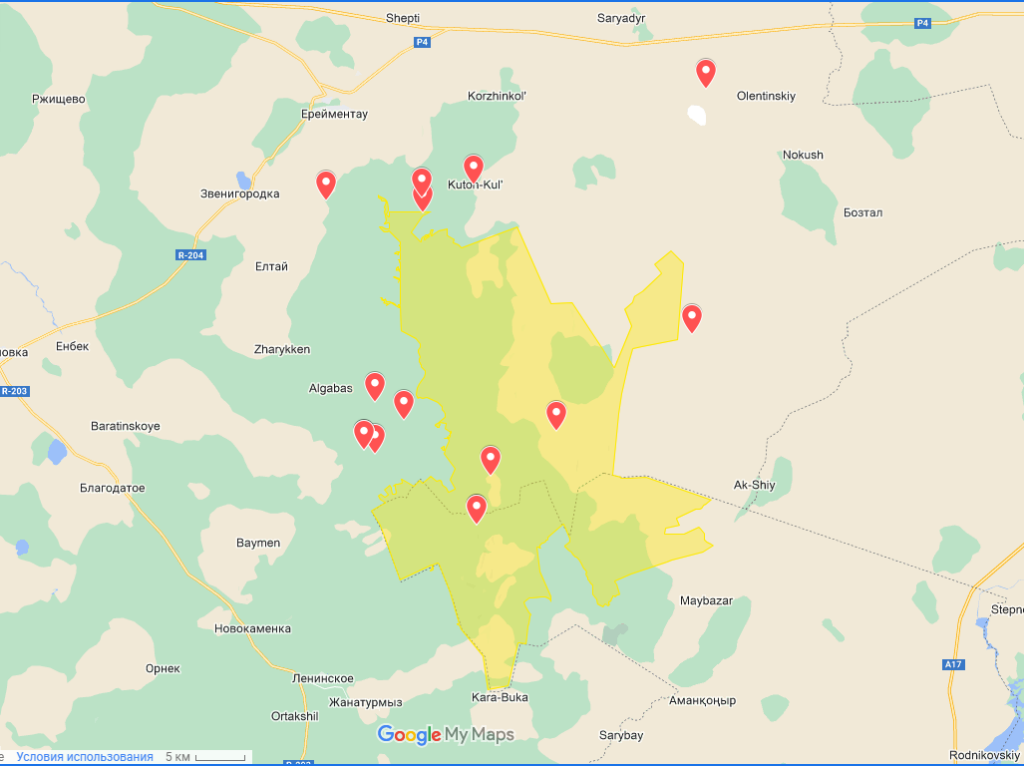
Location points of artificial nesting sites on the territory and in the protection zone of the National Park “Buiratau”
At the end of the seminar, Genrietta Pulikova presented another important area of bird of prey monitoring — banding and labeling with GPS/GSM trackers. In 2024, the BRCC team ringed and equipped a tracker for a young golden eagle that had grown up in a nest in the Buiratau National Park. The movements of this bird, named Kunshalgan, as well as other birds of prey that we have marked, can be monitored on an interactive map.
BRCC thanks the management of the Buiratau National Park for facilitating the workshop and looks forward to further cooperation in the study and protection of birds of prey.


